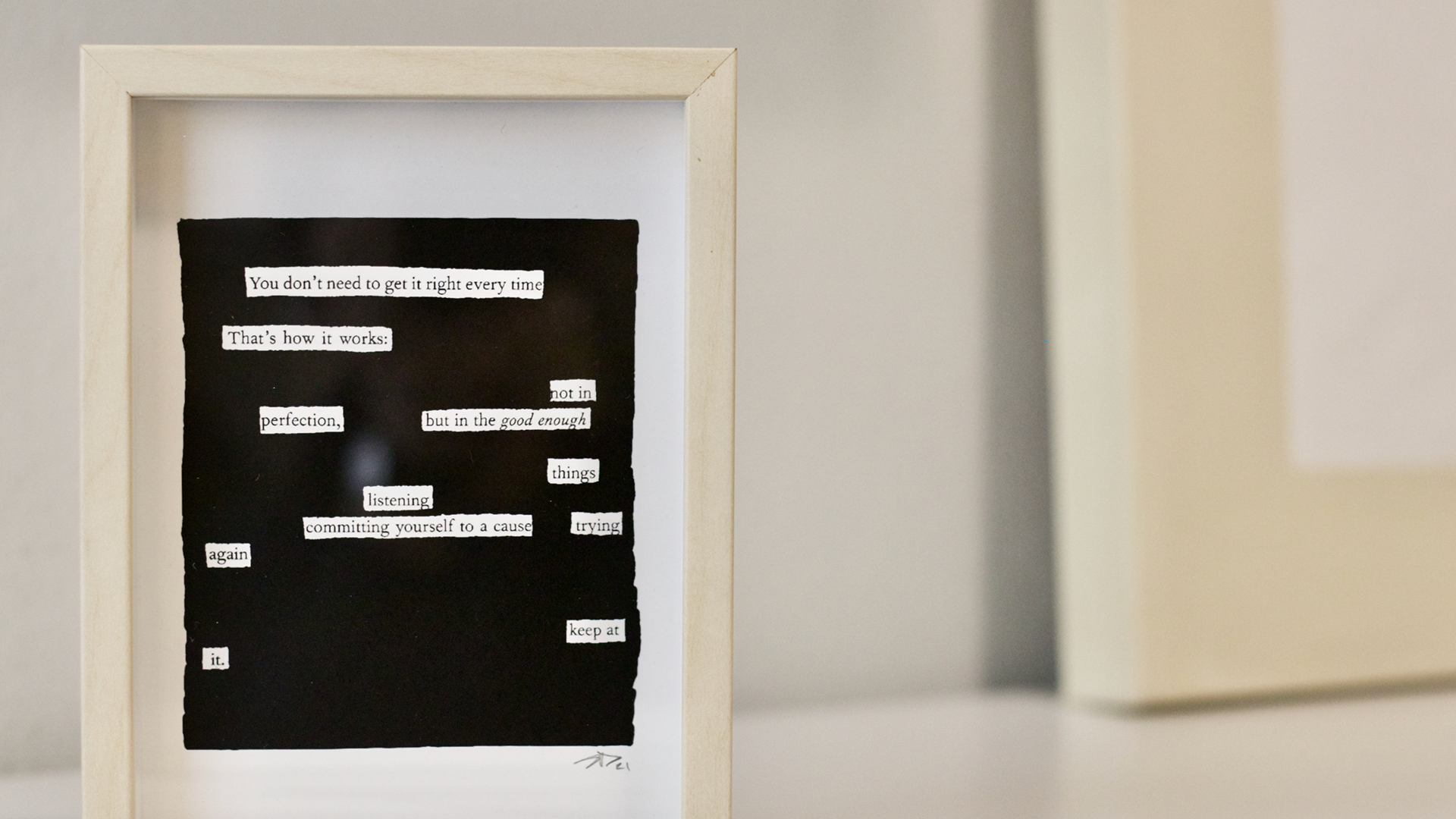Sarah Duet: What Happened is Happening
How did you get into poetry? How did that eventually lead you to blackout poetry?
I think I have been writing poetry in one form or another since before I could even spell, but songwriting was the craft I studied most seriously and honed over the years. Though I first discovered blackout poetry about 10 years ago, I had never tried making it until the Fall of 2020. And I suppose it was the inability to write in other ways that led me to give it a try. I felt bottlenecked creatively. There was so much to say, to contemplate, to process, to ask. Yet it was difficult to get any of it out. My previous methods and mediums were failing in the current context, so I turned to this new-to-me technique and was surprised to find a much-needed creative flow.
What is your process like when composing a blackout poem?
I start by choosing a source text—like an old book, newspaper, or magazine—and scanning the page for words that interest me. It’s a very intuitive process, and there’s no “wrong” way to do it, which I appreciate. I usually underline some words and phrases in pencil then read back through them in search of a theme or direction that might surface. I try never to read the original text in full because it’s important to me to say something truly new, rather than summarize the source. After I’ve edited things into a cohesive poem of some kind, I box the chosen words in with a fine point Sharpie before blacking out the rest of the page with a thicker, chisel tip marker.
What messages are you able to convey through blackout poetry that you may not be able to convey through regular poetry?
Such a good question. I suspect that the range of my subject matter is greater in blackout poetry since I’m relying on source texts rather than simply my own rumination for material. Of course my thoughts, feelings, and observations are influencing how a blackout poem takes shape, but the original text is a constant constraint that enables a different sort of creation. There is a freedom that comes from limitation, a newness that arises in juxtaposition. I am consistently surprised by how profound even just 4 or 5 words left on a page can become in the process.
How was the process of writing and putting together your first book, WHAT HAPPENED IS HAPPENING?
It has been a really fulfilling process. You’re catching me right at the tail end, so honestly I’m a little overwhelmed with metadata, document bleed settings, and getting final proofs from the printer, but it’s all worth it. Doing the design and layout myself, I’ve really drawn on my Centenary communication/new media design training every step of the way! I didn’t originally know that I’d publish a book of these poems, and it was so encouraging to see people resonating with them as I shared them online. As people expressed interest and themes started developing in the work, I realized this was a gift I wanted to share with the world. It’s been such a solitary activity for about a year and half, so I’m very excited about moving into this conversational stage of the process.
As a Centenary alumna, how do you feel about having an exhibition at the Meadows Museum? What do you hope for students to gain when viewing your exhibition?
I’m honored to have my work in the Meadows Museum and excited to be able to gather with folks around the exhibit on March 22nd! I laughed a little to myself initially because I don’t remember being a particularly good poetry student when at Centenary, and to be honest, I was too intimidated by Meadows to spend much time there as a student. Though it has been one of my favorite places to visit since graduating, so it feels quite special to have something I’ve made in the gallery.
First and foremost, I hope students can experience a few slow, quiet moments when visiting the exhibition. I know those are hard to come by in a hectic Centenary schedule. And I hope some might even want to give blackout poetry a try themselves! Creative expression is essential for our health and development, and it’s often easiest to start by making “something from something” that already exists. This is a low-stakes creative practice that anyone can do for themselves—not for an assignment or a grade or an audience—and I’d invite students to make space for that.
What Happened is Happening is on display at the Meadows Museum from March 7 –April 1, 2022. See more of Sarah’s work here.

